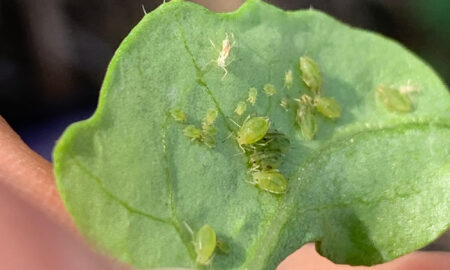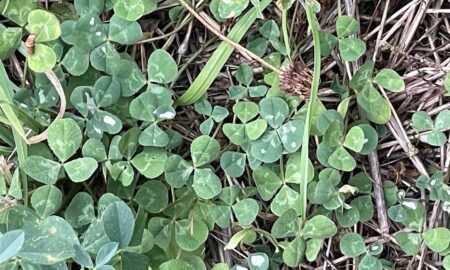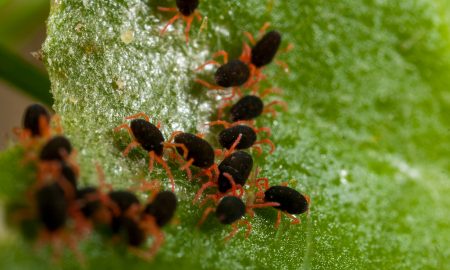Native budworm season is now in full swing with moths being caught in traps across southern NSW and northern Victoria. Although the trap numbers are not unexpectedly high, we have had reports of large numbers of larvae in some areas. We explore why this might be occurring.
Tapping numbers
| Trap location | Aug 1st | Aug 8th | Aug 15th | Aug 22nd | Aug 29th | Sep 5th | Sep 12th | Sep 20th |
| Ouyen | 0 | 0 | 2 | 2 | 24 | 15 | 340 | |
| Swan Hill | 0 | 1 | 42 | 71 | 19 | 63 | 25 | |
| Kerang | 0 | 0 | 0 | 8 | 10 | 11 | 25 | |
| Rupanyup | 0 | 0 | 0 | 0 | 0 | 3 | ||
| Marnoo | 0 | 7 | ||||||
| Deniiliquin | 0 | 0 | 0 | 22 | 6 | 11 | 16 | 5 |
| Wagga | 0 | 0 | 0 | 3 | 39 | 3 | ||
| Parkes | 0 | 0 | 0 | 0 | 1 | 21 | 1 | |
| Forbes | 0 | 0 | 0 | 1 | 1 | 2 | 1 | 5 |
| Skipton | 0 | 0 | 0 | 7 | ||||
| Wagga/Lochart | 0 | 0 | 0 | 4 | 0 | 0 | ||
| Coleraine | 0 | 0 | 0 | 0 | 0 | 0 | 1 | 0 |
| Dookie | 0 | 14 | 60 | 10 | 34 | |||
| Barooga | 0 | 0 | 0 | 8 | 6 |
Low trap catches, but high numbers of larvae in the Mallee
Increases in moth numbers are to be expected at this time of year as flights begin to come in from the north-west. Although we are seeing moths in traps earlier than last year, the numbers are not overly high in relative terms.
However, in the Mallee region agronomists from the trapping network are finding large numbers of larvae which are much bigger than would be expected considering the time when adult moths were first observed in traps.
For example, on the 13th of September sweep netting of lentil and pea crops near Ouyen revealed large numbers of larvae (15-20 grubs per sweep) which were already 7-8mm in length (around 3rd instar). Considering that the first moths were only detected on the 15th August in this area, our models indicated we would not see 3rd instar larvae until a few weeks later.
In comparison monitoring at Kerrang, where moths were first detected in low numbers in late August, has not detected any larvae yet.
Why are traps not reflecting larvae numbers in the crops?
While we would normally stress that high numbers of moths will not necessarily lead to large numbers of larvae in nearby crops, in this case we are seeing the opposite; relatively high numbers of larvae despite low numbers of moths in traps, at least in parts of the northern Mallee.
Pheromone trapping numbers are never going to reflect the risk to crops, however they do provide a good indication of the timing of native budworm flights and the beginning of their activity in south eastern Australia.
The size of the (male) moth catch in pheromone traps is regarded as an indication of the extent of moth mating, which tends to happen at the end of their migration. It could be that unusually low temperatures and windy conditions have reduced the trap efficiency and hence fewer moths have been caught in some areas this year. Traps are known to be less efficient <10°C, especially in blustery conditions.
It is also possible but unlikely that moths are mating further west or north of the cropping regions and are then being blown shorter distances into crops to lay eggs. This would mean female moths are laying in the area, but the numbers of male moths (to enter the traps) are relatively reduced.
So why such large larvae early in the season?
While flight dates and larvae numbers in the Mallee region are known to be particularly variable, we don’t have a full understanding of these observations. However, we can provide some plausible explanations.
Our native budworm growth simulations show that to have 3rd instar larvae present in Ouyen on the 13th of September, the eggs were most likely laid in July. This indicates that the native budworm was active over winter in the Mallee region, which would be very surprising.
Native budworm breeding over winter is not thought to occur anywhere south of the NSW/Queensland border because of the impact of severe frosts. Southbound flights from northern autumn/winter breeding areas can begin in late winter or possibly earlier, resulting in local egg-laying. Hence, the larvae could have developed from those early flights if no frosts occurred after this time.
As with every year, the synoptic weather is a key factor in the scale and timing of native budworm flights, egg laying and development. An unusually heavy band of rainfall in March 2021 from Queensland’s Channel country down through western NSW is likely to have promoted growth of host plants which could have supported high native budworm populations and encouraged early migration. Minimum temperatures in the Mallee were also above average over winter, with only one frost, which may have allowed early laid eggs to survive.
The take home message
Regardless of the reason, this year is a good example of the fact that trapping provides an indication of when flights occur, but on the ground monitoring is always going to be essential to keep on top of larvae numbers and their potential to damage crops.
The presence of 3rd instar larvae in the Mallee in early September would mean that the most damaging stages (4th-6th instars) could be a risk for early pod setting in some crops.
However, the relatively low numbers of moths in traps in most other areas is beginning to suggest it will be a light native budworm season this year.
For further details on monitoring and management see our PestFacts article from August.
Acknowledgements
Thank you to Peter Gregg (University of New England), Garry McDonald (University of Melbourne), Leo McGrane (Cesar Australia) and Paul Umina (Cesar Australia) for discussions on this topic and contributions to this article.
Cover image: Photo by Andrew Weeks, Cesar Australia





